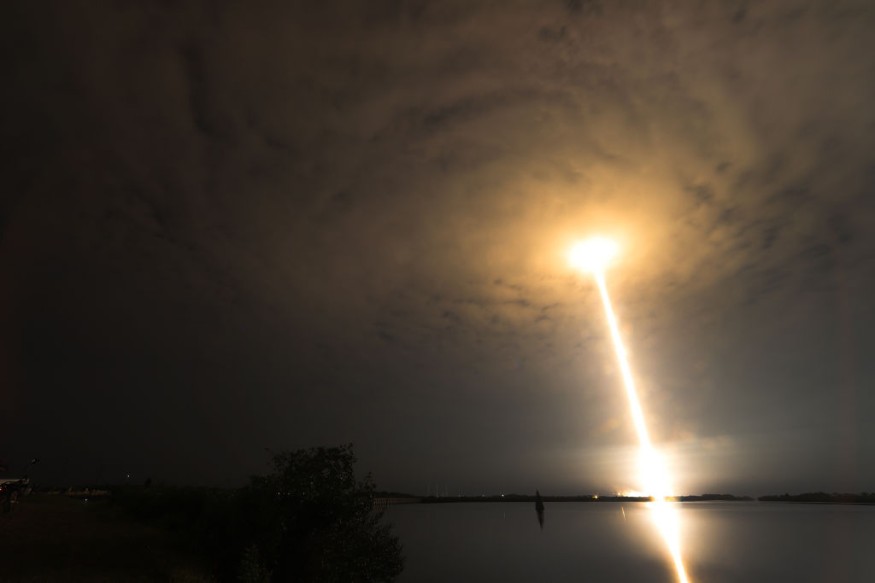A few hours after SpaceX flew four NASA astronauts to the orbital outpost from Cape Canaveral, another Falcon 9 rocket launched 52 Starlink satellites into orbit from the Californian Vandenberg Space Force outpost. Both rocket boosters made precise landings on their movable barges a few minutes after launch.
SpaceX broke another world record on the Starlink mission. It was the 45th launch of the year, the second of the day, and the fifth time the space company had used the Falcon 9 rocket booster.
SpaceX Falcon 9 Launches 52 Starlink Satellites
Just hours after flying NASA astronauts onto the International Space Station, Space.com said SpaceX launched 52 more of its Starlink internet satellites into orbit on October 5.
At 7:10 p.m. EDT on Wednesday, the Starlink satellites launched on a Falcon 9 rocket from the Vandenberg Space Force Base in California (2310 GMT; 4:10 p.m. local California time).
8.5 minutes after launch, the Falcon 9's first stage returned to Earth and touched on the SpaceX droneship, Of Course, I Still Love You, which was positioned in the Pacific Ocean.
Deployment of 52 Starlink satellites confirmed – completing SpaceX’s second launch in ~7 hours!
— SpaceX (@SpaceX) October 6, 2022
The upper stage of the Falcon 9 continued to accelerate into orbit as the first stage approached its landing. About 62 minutes after liftoff, the 52 Starlink satellites were deployed as expected, SpaceX said on Twitter on Wednesday night.
It was SpaceX's second launch of the day, after the Crew-5 manned mission for NASA, which blasted off from Florida's Kennedy Space Center at 12:00 EDT (1600 GMT). This launch was the company's 45th of 2022.
You can follow the four-person Crew-5's journey to the International Space Station live here on Space.com on Thursday, October 6, at 4:57 p.m. EDT (2057 GMT).

ALSO READ : SpaceX's Falcon Heavy Set To Fly Again Later This Month for a US Space Force Mission After Three Years
How The Launch Went
According to Teslarati, an extremely new Falcon 9 rocket propelled a Crew Dragon spacecraft carrying four professional astronauts most of the way clear of the atmosphere before returning to the planet and safely landing on a SpaceX drone ship. After Dragon was launched, the top stage continued to low Earth orbit, beginning the 29-hour voyage to the International Space Station (ISS).
A second Falcon 9 rocket launched from SpaceX's Vandenberg Space Force Base (VSFB) SLC-4E pad seven hours and ten minutes later, breaking through a heavy blanket of coastal fog. The Falcon 9 launched and landed the booster B1071 successfully, and the rocket's upper stage performed well during its two subsequent runs. This added to the more than 3000 operational satellites already in orbit.
And SpaceX isn't through yet. On October 6, less than 24 hours following Starlink 4-29, a third Falcon 9 rocket is planned to launch from SpaceX's Cape Canaveral Space Force Station (CCSFS) LC-40 pad as early as 7:07 pm EDT (23:07 UTC). The mission will place Intelsat's Galaxy 33 and Galaxy 34 communications satellites into a geostationary transfer orbit to complete the trio (GTO).
The flight will be the 14th for Falcon 9 booster B1060, dramatically lifting the threshold for the adoption of recycled SpaceX rockets by the commercial sector. Prior to Galaxy 33/34, Transporter-3-the eleventh launch of Falcon 9 B1058-held the record for SpaceX's commercial reuse.
Intelsat Satellites to Be Launched
In addition, Advanced Television said SpaceX intends to launch two Intelsat communications satellites from Florida's Cape Canaveral Space Force Station at 7:07 p.m. EDT tonight, October 6. The two Intelsat satellites assist the operator's duties for C-band broadcasts to cable head-ends in the US.
Prior to this Intelsat mission, the Falcon 9 first-stage rocket that is assisting it launched the GPS III-3, Turksat 5A, Transporter-2, and ten Starlink missions. The first stage will touch down on the A Shortfall of Gravitas droneship, which will be positioned in the Atlantic Ocean following stage separation.
RELATED ARTICLE : SpaceX Brings Russian Cosmonaut, Other NASA Astronauts to International Space Station
Check out more news and information on SpaceX in Science Times.












